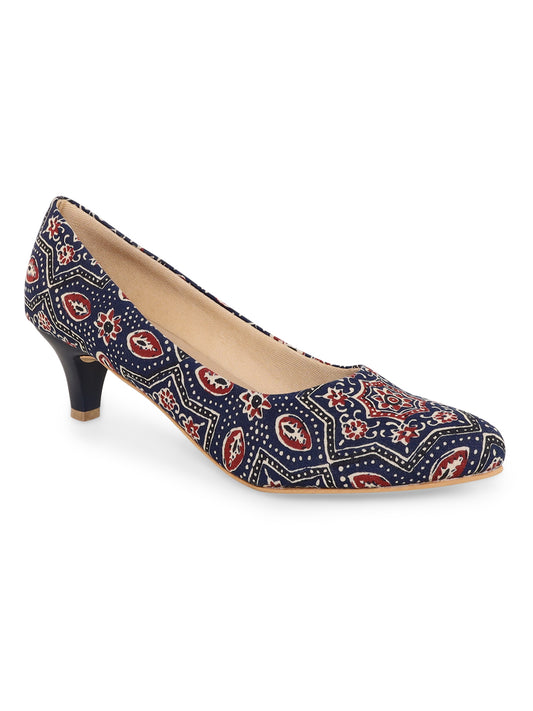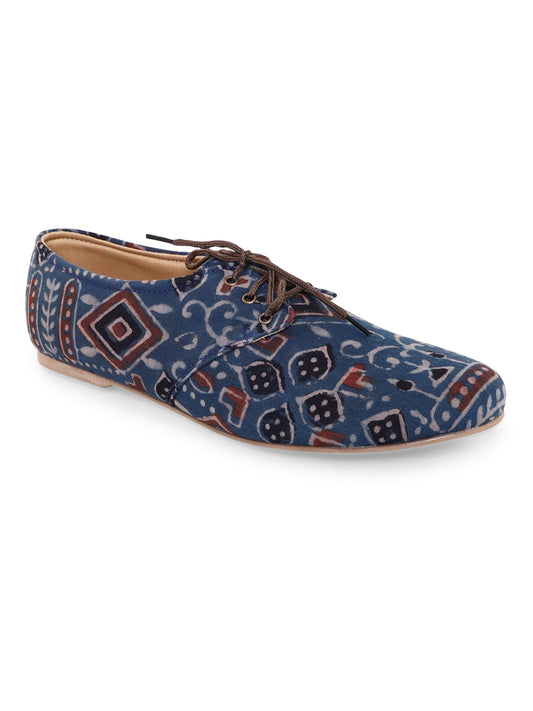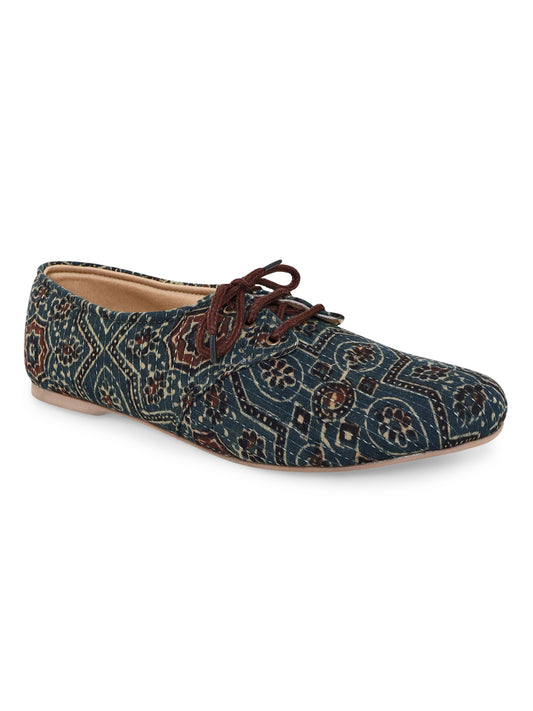Ajrakh is an ancient block-printing method on textile that originated in the present day provinces of Sindh in Pakistan and the neighboring Indian districts of Kutch in Gujarat and Barmer in Rajasthan. Although ajrakh printing is a part of the culture of Sindh, its roots extended to the states of Rajasthan and Gujarat in India during the times of the Indus Valley Civilisation, around 3000 BC. The Indus river was an important resource for washing fabric and sustenance of raw materials like indigo dye and cotton, which were copious along the river.
According to some, it comes from the Arabic word ajrakh, which means blue, one of the chief colours in ajrakh printing. Other historians say the word has been coined from the two Hindi words- aaj rakh, meaning, keep it today.
Ajrakh printing celebrates nature amazingly. This is evident in the aesthetics of the unification of its colours as well as motifs. The traditional colours found in ajrakh printing are deep, which symbolise nature. Crimson red symbolizes the earth, and indigo blue symbolises twilight. Black and white are used with a view to outline motifs and define symmetrical designs. Although the use of eco-friendly synthetic dyes is prevalent, the use of traditional natural dyes is being resumed gradually. Indigo is obtained from the indigo plant. Craftsmen used indigo plants growing profusely along the Indus river. Red is acquired from alizarin found in the roots of madder plants. Black is obtained from iron shavings, millet flour and molasses with the addition of ground tamarind seeds to thicken the dye. The contemporary ajrakh prints have intensely vibrant contrasting colours like rust, yellow and orange.
Nature plays an important role in the making of Ajrak. The craftsmen work in total harmony with their environment, where the sun, river, animals, trees and mud are all part of its making. The 16-step process is required to create a piece of Ajrakh fabric is what makes the outcome so beautiful and intricate. Historically, Ajrakh has been printed on both sides accurately parallel on both sides, in short the blocking motion is performed hundreds of times until the cloth is completely covered with the block’s outline in three different resist bases. This process is repeated several times with different kinds of dyes with the aim of achieving the final design in the deep blue and red shade. This process consumes a lot of time. The longer the time span before commencing the next stage, the more rich and vibrant the final print becomes. Hence, this process can consume up to two weeks, and consequently results in the formation of exquisitely beautiful and captivating designs of the ajrakh.
Ajrakh in changing times
With passage of time, ajrakh printers are now open to trying out new motifs, designs, dyes, materials and want to keep pace with the growing and changing contemporary world of fashion. At present, the printing art is being impacted by market demand and the new crop of ajrakh printers are prepared to accept and experiment with new pattern inputs provided by fashion designers. Hence, it has received a new lease of recognition both nationally as well as internationally.
Kanvas is using ajrakh since we started. The print is to fall in love and we can’t deny that. We have experimented with a lot of fabrics for Ajrakh printing and the result has been different and surprising every single time. It’s a blessing to work with the artisans directly so we get to experiment with blocks, patterns and color combinations. Our Best Seller Kitten heels are made with Ajrakh Print. Every piece with ajrakh on it has been an eye candy for our brand.





